Five must-try healthy baby food recipes
- Published on:
- Last update: 30 November 2023
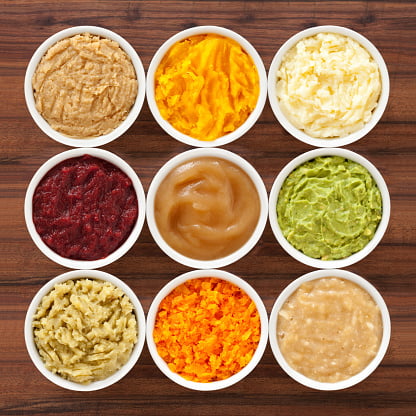
Healthy baby food
Making your baby food doesn’t require you to be a culinary master. Even though they offer convenience, some commercial baby foods lose vitamins and nutrients during processing. At the same time, these foods may lose the “yumminess” that encourages babies to eat new foods. Switch to healthy baby food to guarantee a well-balanced diet.
For the baby to stay upright and keep their head up, they must sit upright. A healthy baby also needs to show signs of wanting solid food. You’re ready to give your baby their first food once you get the okay from the paediatrician!
Here are a few things you should keep in mind
Below are a few things to consider before you start thinking about baby food:
- You should only give your child about 1 to 2 tablespoons of food at a time.
- You should pay attention to your child’s allergies, especially if they consume foods that contain common allergens. Eggs, peanuts, wheat, soy, fish, and shellfish are among the most common allergens.
- The newest research has not been proven beneficial to delay introducing these foods beyond six months, nor that presenting them in any particular order is effective.
- Remember to have fun most of all!
List of healthy baby food
Some people prefer organic, wild, pastured, and grass-fed choices whenever possible. If you prefer, you can also include these items with these healthy baby food recipes.
Here are some foods that may have higher pesticide residue levels:
- apples
- nectarines
- peaches
- strawberries
- celery
- grapes
- spinach
- sweet bell peppers
- cherry tomatoes
- cucumbers
- snap peas
- potatoes
4 to 6 months old: healthy baby food recipes
For babies between 4 and 6 months, you should use simple, one-ingredient purees.
Food allergies and sensitivities can be easily identified this way. The combination of foods can enhance flavour and make a child-like more once you have established your child’s tolerance for individual foods.
1. Pea purée
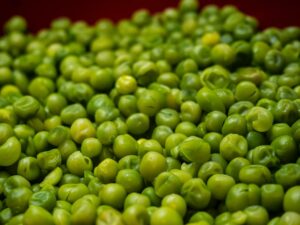
Peas are a small yet mighty food that is chock-full of nutrients such as vitamin A and C, iron, protein, and calcium.
Make sure to strain peas to make them as smooth as possible if the skin makes the texture less appealing for your child.
Ingredients
- 3 cups frozen peas
- ½ cup breast milk
Directions
Step 1: Fill a saucepan with water just below the steamer’s bottom and place a steamer insert in it. Heat the water to boiling. Put peas in a covered steamer and steam until they are tender, about 15 minutes.
Step 2: In a blender or food processor, combine peas and breast milk until you get a smooth paste. Remove any lumps from the mixture by straining it through a fine-mesh sieve.
Step 3: You should place the pea mixture in an ice cube tray, cover them with plastic wrap, and freeze them until they are solid for two to three hours. Refrigerate the frozen cubes after transferring them to a resealable bag.
Step 4: Heat cubes for about 30 seconds in the microwave until they are warm but not hot. Immediately stir well.
Cook’s Note:
Formula or water can be substituted for breast milk.
You can store frozen cubes in the freezer for up to two months. Follow these healthy baby food recipes to make some amazing food for the babies.
2. Banana purée
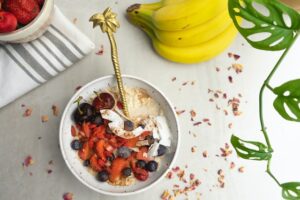
Bananas are often referred to as “perfect” foods because of their potassium and fibre content.
One of nature’s antacids, bananas are gentle on the stomach and great as a potassium source. It is important not to overdo it with bananas since they are among the best first foods. Overindulging in bananas can lead to constipation.
Bananas are the ideal weaning staple, easy to peel and prepare. Also, they provide lots of energy & can be easily mashed for use as purees on the go. Go through the healthy baby food recipes.
Ingredients:
- One small banana
- Formula or milk
Method:
- Mash a small banana with a fork after you peel it.
- Add a little milk if you need to thin down the consistency and give the food a familiar taste during the first stages of weaning.
- If serving as a first foods breakfast, served with breast milk or formula.
You can make changes to these healthy baby food recipes as you like.
Avocado purée
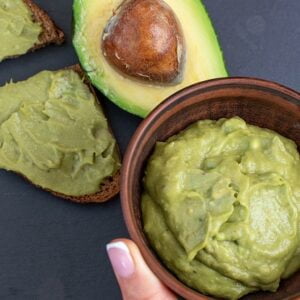
Buttery treats like this are excellent for babies’ brain and physical development, thanks to their “good fats.” Baby seems to enjoy the texture of perfectly ripe avocados, too.
Refrigerate the avocado puree with the avocado pit in it to prevent it from browning. You can customize these healthy baby food recipes to your choice.
Ingredients
- One organic avocado mashed
- Formula or milk
Instructions
If Serving Fresh / Immediately
- Use a fork to mash the avocado or a food processor to blend it.
- To achieve the desired consistency, mix with breastmilk, formula or water.
- In the event of freezing
- Use a fork to mash the avocado or a food processor to blend it.
- Put into ice cube trays, wrap and freeze.
- Defrost in the refrigerator a night before use, or place ice cubes in a bowl of hot water on the counter to thaw.
- After defrosting, mix with breast milk, formula or water until desired consistency.
Notes
One ice cube equals one ounce of food. In addition, as your child gets used to solid food, you won’t need to thin out the avocado.
First carrots purée
The naturally sweet taste and pleasant texture of carrots make them an excellent introduction to solid foods.
Carrots are prepared to provide a rich supply of antioxidants, beta carotene and vitamin A.
Ingredients
- bundle of carrots
- 1 cup water
Method:
Cut carrot segments into 1-inch pieces after trimming and peeling. Combine the pieces with the water or broth in a medium saucepan. Put the pot on the stove, bring to a boil, reduce to a simmer, cover and simmer for 25 minutes (if your carrots are thicker, this could take longer). Leave in the cooking liquid to cool. Then purée it in a food processor, blender, or food mill, and place it in small portions in the freezer.
Papaya purée
You should introduce papayas only to a baby at least 7 or 8 months old because of their high acidity.
Papaya or pineapple (could also be a pineapple) is full of enzymes that help digestion, so this may be an excellent food for your baby if they are experiencing constipation, diarrhoea, or stomach upset.
An excellent recipe for first tastes is papaya puree. It’s an ideal ingredient for a first taste puree because papaya is packed with vitamin C, fibre and aids digestion.
Give this Apple and Mango Puree a try with your toddler so that they can experience another perfect first taste puree. Try these healthy baby food recipes and let us know your feedback.
Tips for making the best homemade healthy baby food
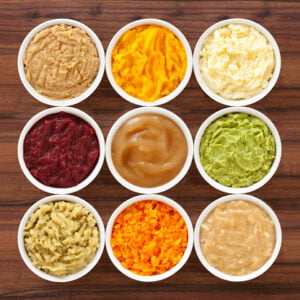
- To make sure that a blender has enough volume to blend well, use at least one cup of the base ingredient.
- Add more liquid or breast milk to any homemade puree.
- Make ice cube trays with any leftover food you won’t eat within three days. You can store frozen cubes in freezer bags for up to three months after freezing. Place these frozen baby food recipes in the fridge overnight before serving in an airtight container.
- Ensure that your puree isn’t tart by tasting all fresh foods and ensuring sweetness. If a puree is highly acidic, mix it with Banana Puree, Avocado Puree, Applesauce, or Mashed Sweet Potato.
- Add some whole milk yoghurt, coconut cream, or avocado puree to any fruit or veggie purees if you want to add fat or protein.
- If desired, you can replace the water with breastmilk or formula.
- Adding two purees together will enhance the flavour.
- Adding baby oatmeal or hemp seeds to any puree will add texture.
Get healthy baby food products from Yummy Valley.
Share this post:

